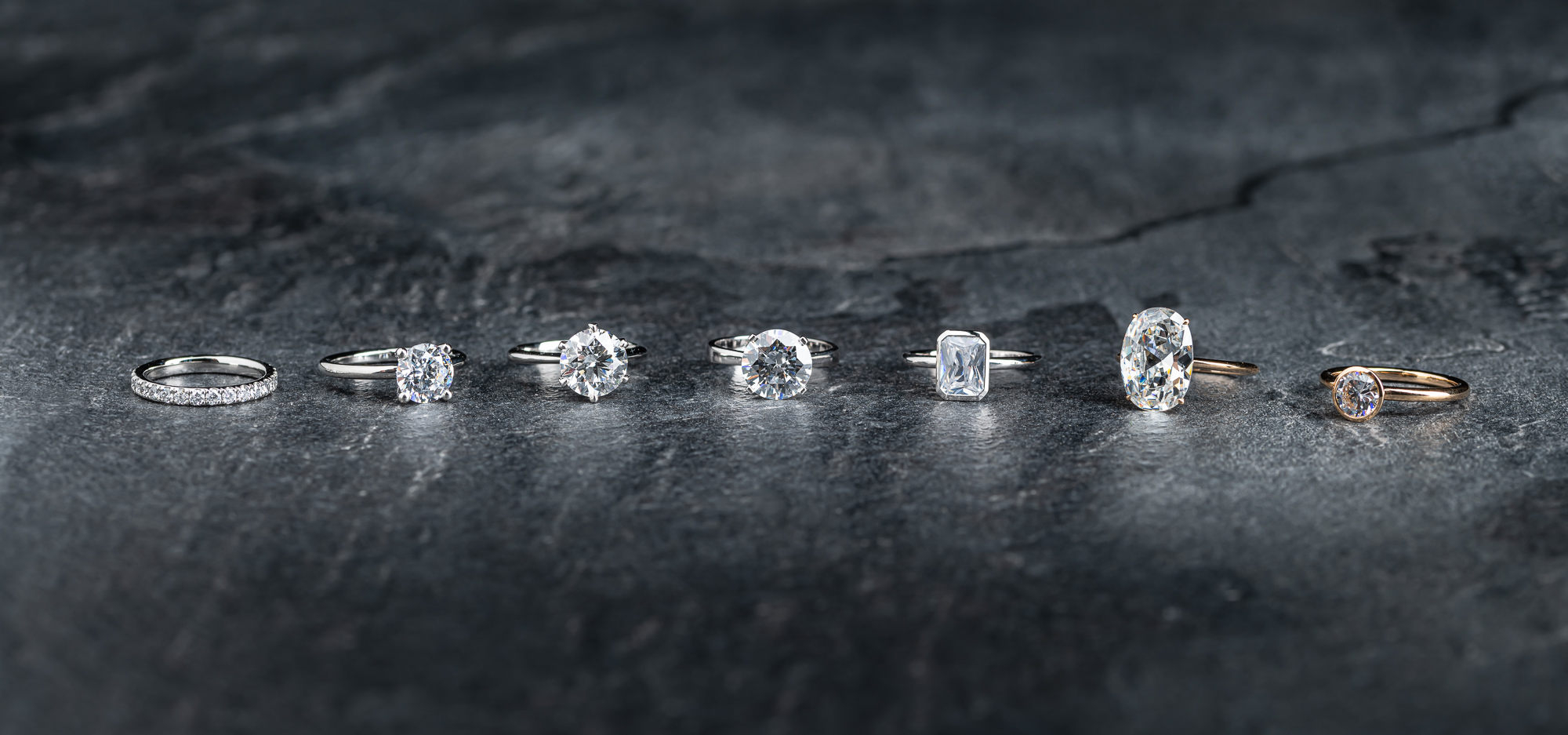We help you find the perfect diamond & jewelry/ring….
Jewelry, Rings at Green World Diamonds
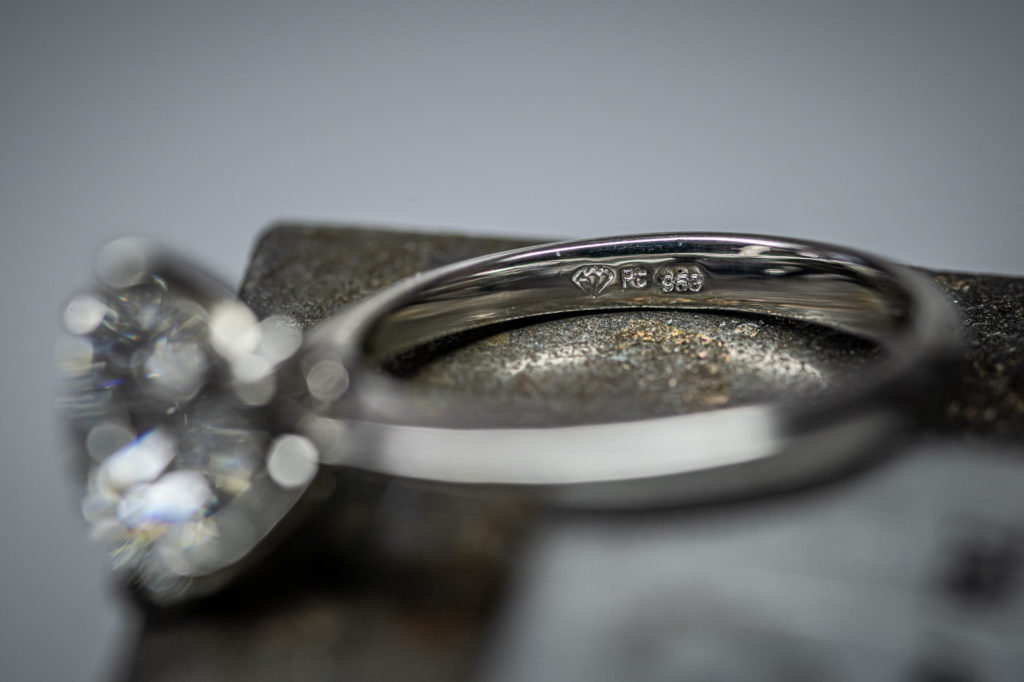
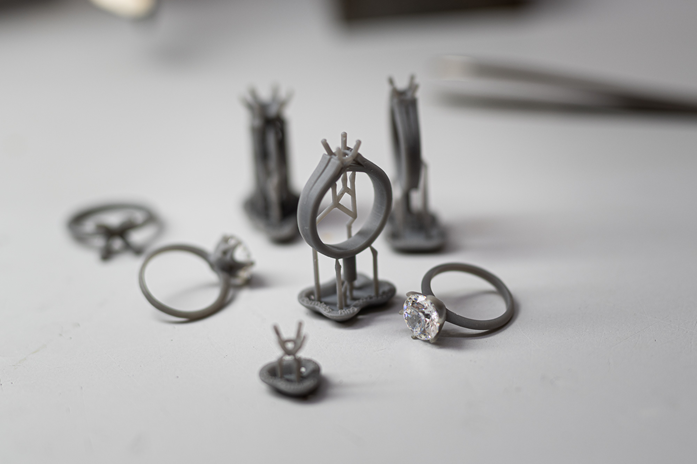
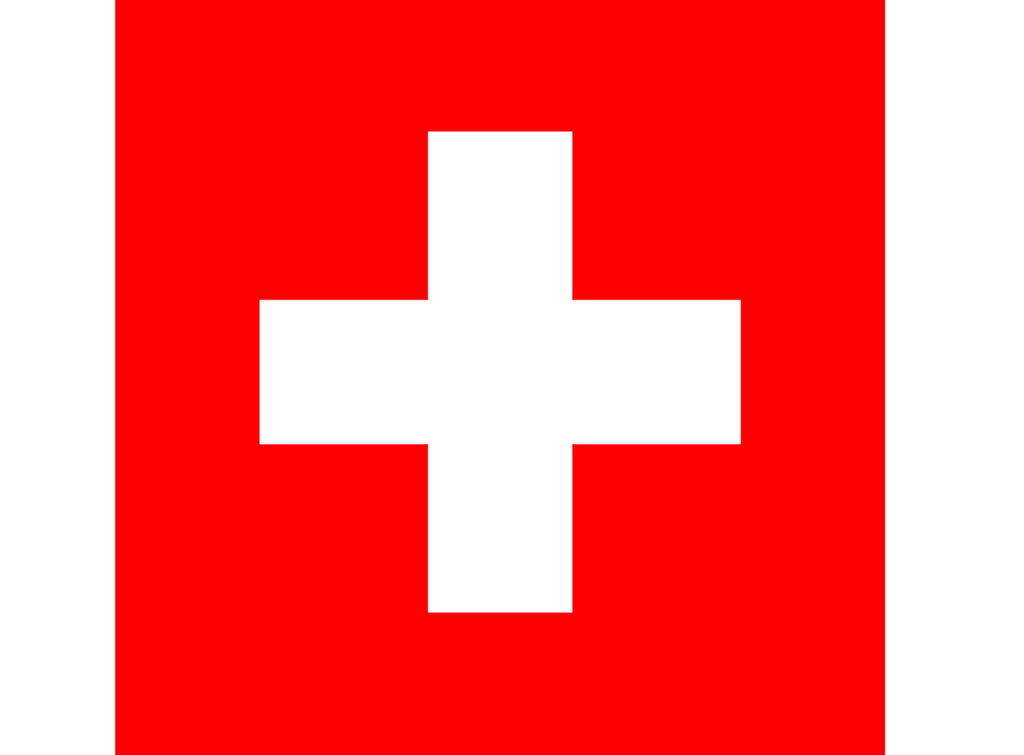
Jewelry / Rings from Green World Diamonds
- Best quality
- security
- Individuality & tailor-made
- Swissness (Swiss Goldsmiths & Atelier)
We are a Swiss company!
Our designers, goldsmiths, in-house stone setters and atelier are in Switzerland.
→ Top Swiss quality!
→ Diamond (size & dimensions: diameter & height):
All proportions and angles are ideally chosen to show diamond to its best advantage & wearing comfort is ideal. E.g. a smaller diamond is set higher and a large one with more depth is set lower
→ CAD illustrations
→ Plastic models e.g. ring to try out
In spite of our good prices you will receive a top quality that is individually tailored to you and your diamond. For example, our rings are individually produced for you and tailor-made to:
- Diamond (Size & Mass)
- Finger size
In this way we ensure that the diamond is shown to its best advantage, that the wearing comfort is ideal and that all proportions are chosen in the best possible way.
For example, we tend to set a smaller diamond higher so that it appears larger and is better accentuated, whereas a very large diamond is set slightly lower because the diamond itself already has a large height and it does not become too oversized and uncomfortable.
Metal choice tips
Which metal should I choose for my engagement ring, solitaire ring or jewelry?
Choose your favorite metal from PT950 platinum, 18 carat 750 palladium white gold, yellow gold, 4N rose gold, red gold, bicolor or two-tone.
Are environmental friendliness and ethics important to you? Would you like ecological recycled gold or platinum? Eco-gold?
https://www.greenworlddiamonds.ch/buyers-guide/metalle/
https://www.greenworlddiamonds.ch/buyers-guide/jewelry-guide/
The type of jewelry metal affects everything from price to durability. It can even affect the color and sparkle of your stone, especially diamonds.
What should be considered when choosing metal, platinum and gold for jewelry?
Why is the choice of metal important for diamond jewelry?
The choice of metal for diamond jewelry is important for several reasons. The metal in which the diamond is set influences the appearance, durability, comfort and style of the piece of jewelry. Here are some reasons why the choice of metal is important:
- Aesthetics and style: The metal has a significant influence on the appearance and style of the piece of jewelry. The selection ranges from yellow gold, white gold and rose gold to platinum. Each metal gives the jewelry its own aesthetic touch, and the choice should match your personal taste and style.
- Contrast with the diamond: The metal can influence the contrast with the diamond. A white gold or platinum frame can enhance the brilliance of a diamond, while yellow gold or rose gold can appear warmer and more vintage-inspired.
- Skin compatibility: Some people have sensitive skin and are allergic to certain metals. It is important to choose a metal that is well tolerated by the wearer.
- Durability: The durability of the jewelry also depends on the metal chosen. Platinum is known for its durability and resistance to scratches and wear, whereas some other metals can be more susceptible to wear and tear.
- Price and budget: The choice of metal can have a considerable influence on the price of the piece of jewelry. Platinum is often more expensive than gold, and the cost varies depending on the number of carats and the purity of the metal.
- Combination options: If you plan to wear the diamond jewelry with other pieces of jewelry, it is important to make sure that the metals harmonize and go well together.
- Design and setting type: The design of the piece of jewelry and the selected setting type can influence the choice of metal. Some settings, such as grain settings or pavé settings, require certain metals to hold the gemstones securely.
- Weight and wearing comfort: The weight of the metal can affect the wearing experience. Platinum is heavier than gold, which some people find pleasant, while others prefer lighter metals.
The choice of metal is therefore not just a matter of personal taste, but also a question of durability, comfort and aesthetic preferences. It is important to weigh up the pros and cons of each metal and choose the one that best suits your individual needs and preferences.
Diamond Color, Diamond Color and Metal Choice
How does the diamond color influence the metal choice?
The color of the diamond can influence the choice of metal for jewelry, as the combination of diamond color and metal color significantly influences the overall appearance and style of the jewelry. Here are some ways in which diamond color can influence metal choice:
- Diamond color in contrast to the metal: A diamond with a higher color quality, which is almost colorless, can harmonize well with different metal colors. A colourless diamond can look equally good in yellow gold, white gold or platinum, as it contrasts with the metal and emphasizes its brilliance.
- Diamond color and metal color temperature: The temperature of the metal (cold or warm) can influence the perceived color of the diamond. A colorless diamond can appear colder in a cool metal such as white gold or platinum, while it has a warmer appearance in a warm metal such as yellow gold.
- Fancy color diamonds: If you have a fancy color diamond, meaning a diamond with a distinct color such as blue, pink or yellow, you should choose the metal carefully to accentuate the diamond color. For example, a blue diamond can look particularly good in a white gold or platinum ring, while a yellow diamond looks warmer in yellow gold or rose gold.
- Complementary colors: In some cases, you can combine the diamond color with the metal color to create a contrasting effect. For example, a yellow diamond in a rose gold frame can create an attractive contrast.
- Skin color and personal style: Your own skin color and personal preferences play a role. People with cool skin tones often prefer white gold or platinum, while people with warm skin tones prefer yellow gold or rose gold. Choosing a metal that matches your skin color and style can help the jewelry look especially flattering.
- Combinations and occasions: Think about the occasions and the environment in which you will be wearing the jewelry. The choice of metal can vary depending on the occasion and personal comfort. Also think about how the jewelry can be combined with other pieces of jewelry to create harmonious or contrasting effects.
- Personal taste and style: Ultimately, the choice of metal should depend on your personal taste and style. Some people prefer the contrast of diamond color and metal color, while others prefer a harmonious color scheme.
It is important to note that the choice of metal and diamond color is a matter of personal taste, and there are no hard and fast rules as to which metal should be combined with which diamond color. It all depends on the overall look you want to achieve and which look best suits your preferences and style. It is advisable to try out pieces of jewelry in different metals to find out which one best suits your diamond and matches your aesthetic preferences.
Diamond Color
What is the diamond color?
Diamond color refers to the shades of color or lack of color in a diamond. Diamonds are graded on a scale from D (colorless) to Z (clearly tinted), with D being the highest quality grade. Here is some important information about diamond color:
Color classification of white diamonds

- White diamonds “colorless” (D-F)
Goes with everything, very beautiful with platinum & white gold
Colorless diamonds (D-F): Diamonds of quality grades D to F are considered colorless. They are extremely rare and show no visible color nuances. These diamonds are characterized by their maximum brilliance and sparkle. - “upper range near colorless” (G & H)
White diamonds minim “yellow tinted” (I & J)
Rose gold or yellow gold
For white diamonds with “warmer”/slightly yellowish colors, rose gold or yellow gold can accentuate the warm tone and look very nice. But you can also see such stones in platinum & white gold.
Slightly tinted diamonds (G-J): Diamonds of quality grades G to J have a slight hue that can only be determined by experts and under careful observation. They are still highly sought-after and more affordable than colorless diamonds. - Clearly tinted diamonds (K-Z): Diamonds of quality grades K to Z have a visible tint that can be recognized without special equipment. The further a diamond is on this scale in the direction of Z, the stronger the visible tint. Such diamonds are generally less expensive.
The color quality of a diamond significantly influences its appearance and brilliance. Colorless or slightly tinted diamonds reflect more light and have a greater brilliance, while clearly tinted diamonds tend to have less sparkle. The choice of diamond color depends on personal preference and budget.
It is important to note that the color quality of a diamond is primarily assessed by trained gemologists who use special lighting conditions and comparison diamonds. Most people will not be able to see the subtleties of diamond color with the naked eye unless the difference is very pronounced. When buying diamond jewelry, it can be helpful to get a qualified expert diamond color appraisal to ensure you are getting the quality and value you want.
Here you can find more information about white diamonds: 4 C’s classification (carat, color, clarity, cut) & symmetry, polish, fluorescence.
https://www.greenworlddiamonds.ch/buyers-guide/diamond-guide/white-diamonds/: Jewelry Guide, Tips for Engagement Rings, Engagement Rings and JewelryColor classification of Fancy Color diamonds
- Fancy Color Diamonds
→ Increase contrast with small white diamonds - Yellow Fancy Color
→ rose & yellow gold, or bicolor with yellow gold prongs
With Fancy Yellow diamonds, the color of the metal setting can significantly affect their appearance. While yellow gold deepens the color of a yellow diamond, white gold and platinum can make the gemstone appear lighter. - Pink Fancy Color
→ Red gold? - Blue Fancy Color
→ Platinum & White Gold, Rose & Red Gold for a Vintage Touch
2. skin & hair type
- Platinum/White Gold Type
cool colors, often dark hair with rather light skin
→ D-H (Color, white diamonds) - Yellow-Gold Type
warm colors, often blond hair tanned/dark skin
→ “I”-Color (white diamonds) also looks very nice with rose/yellow gold
3. allergies
- Recommendation platinum
- No nickel in the white gold at Green World Diamonds
Palladium white gold
Most expensive and noblest white gold. Completely without allergenic nickel.
Platinum jewellery has a much higher fineness than gold – jeweller’s platinum is approximately 95% pure platinum, whereas high quality 18 carat gold is only 75% fine gold (i.e. contains ¼ of other metals making it more susceptible to allergies).
You can learn more about the metal composition of Green World Diamonds jewellery under Our Metals.
Jewelry & Ring Choice Tips
What do I need to consider when choosing a ring? What variations, what different options are there for a ring?
- Setting of the diamond
- Presentation of the Center-Stones (main diamonds)
- Ornamentation of the side ring rail
- Ornaments around the center stone (main diamond)
- Alternative to embellishments: Eternity & Metal/Wedding Bands
- Ring-Band-Art
Diamond Setting, Diamond Setting
Low profile versus high profile ring
= Diamond close to the finger or rather lifted up in the air
Flush Fit Ring Setting versus Gap, Distance
If the ring band itself is continuous and it has no “basket” or “prongs” at the bottom for support, Eternity & Metal/Wedding bands can be added directly without spacing (visible gap).
If there is a small gap, this can often have charm.
For large distances, choose an Eternity Ring or a Wedding Band with a “round or square bulge”.
Prong = diamond holder (prongs/claw that hold the diamond)
- Most common setting
- Classic & timeless
- Lets a lot of light reach the diamond => good brilliance & fire
- Diamond well visible from all sides
6 Prong, prongs, claws
= Diamond holder (prongs/claw that hold the diamond)
- Round appearance for round diamonds (6 prongs → optical circle).
- Safer (in case 1 of 4 prongs is broken/loose → stone falls out faster and can be lost).
- Better protection (diamond is better protected from “knocks” by 2 additional metal rods)
- For 1 carat and very large stones very nice!
(small stones (less than 0.5 carat) are optically covered by the prongs too much -> looks smaller)
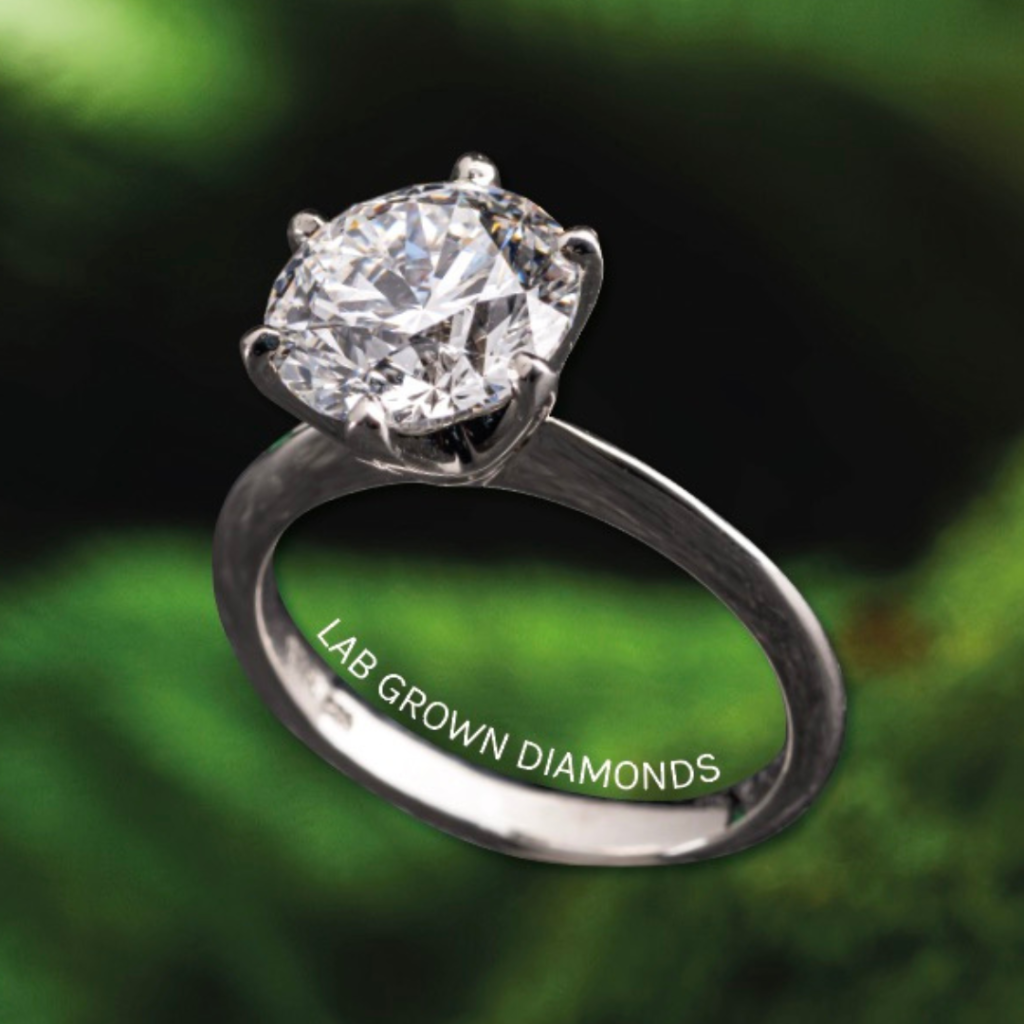
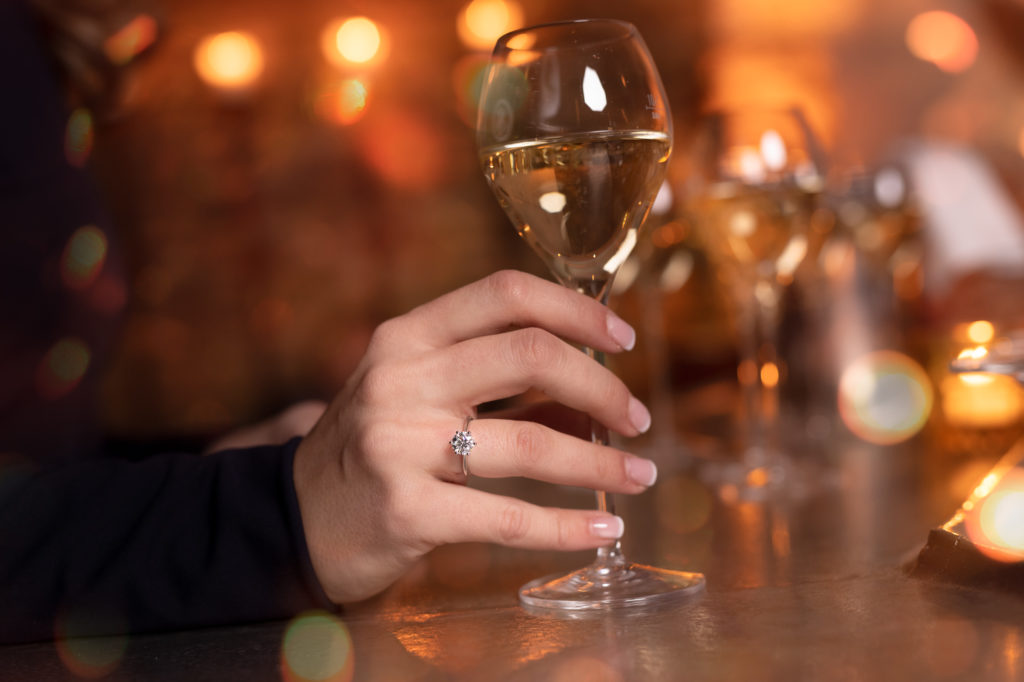
4 Prong, prongs, claws
- Square appearance (4 prongs → optical square, except for flat prongs).
- Ideal for small stones (under 0.5 carat)
- Less metal on the diamond so the center stone can be the star of the show
- You can see more of the stone (from above and from the side)
- Often standard and sufficient in terms of safety
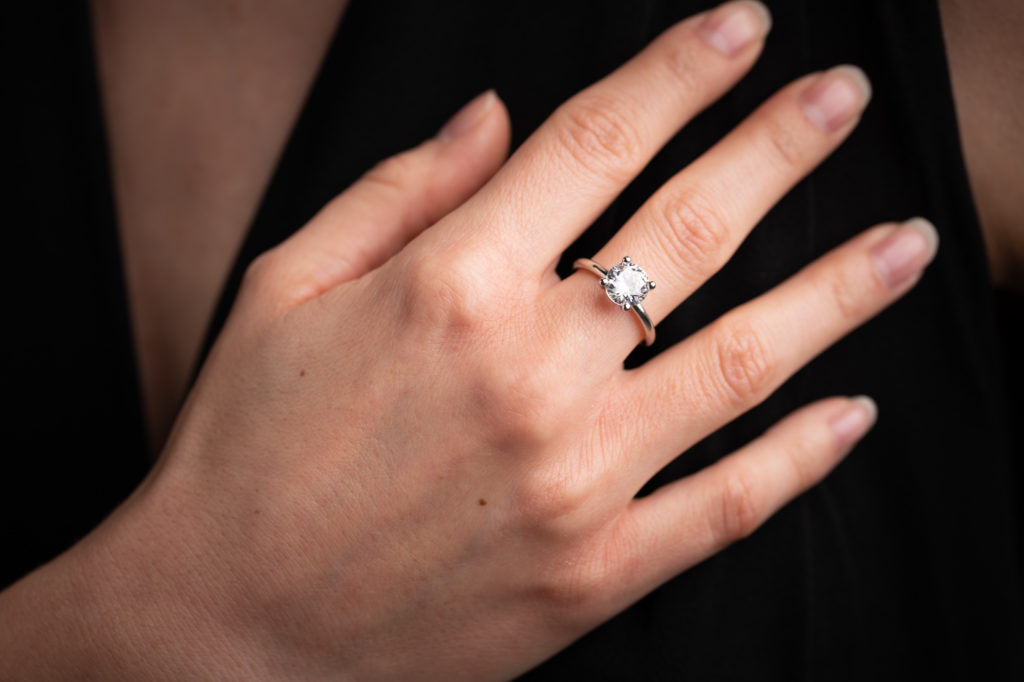
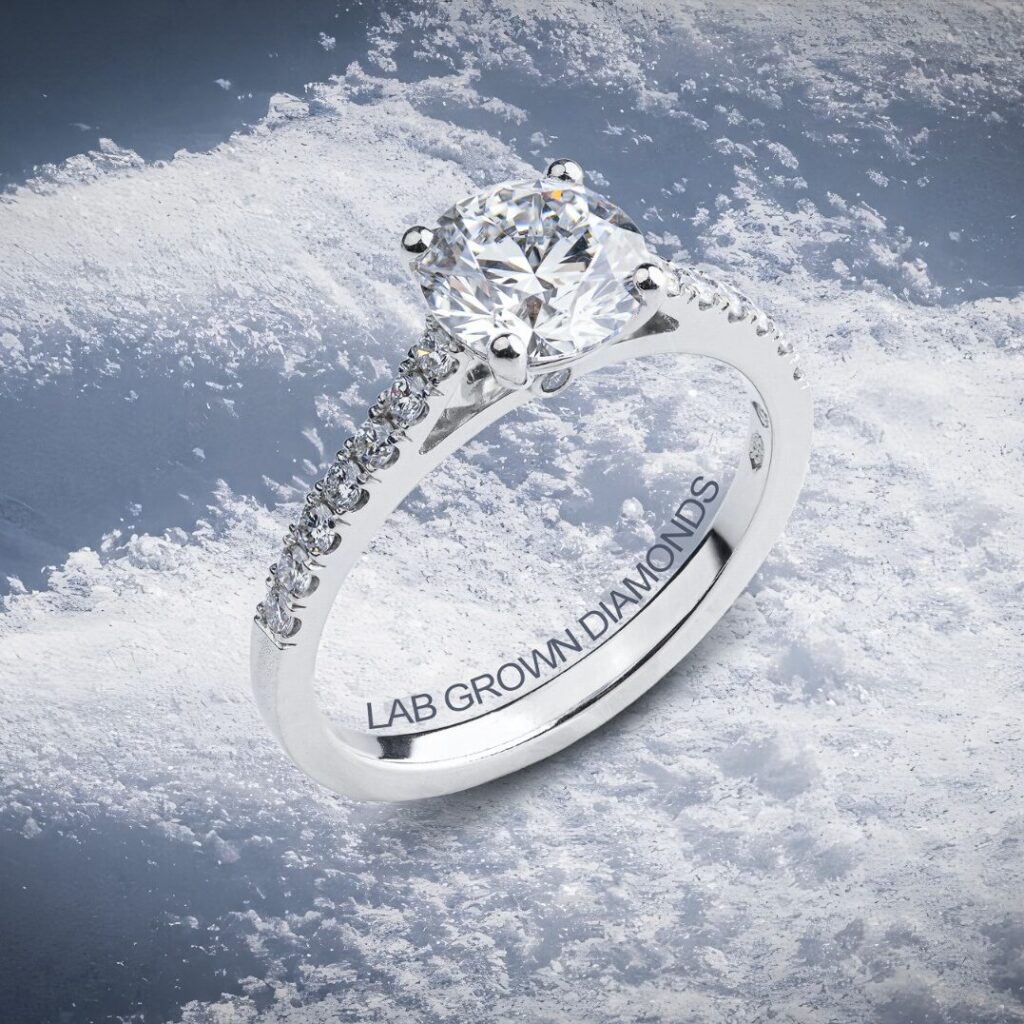
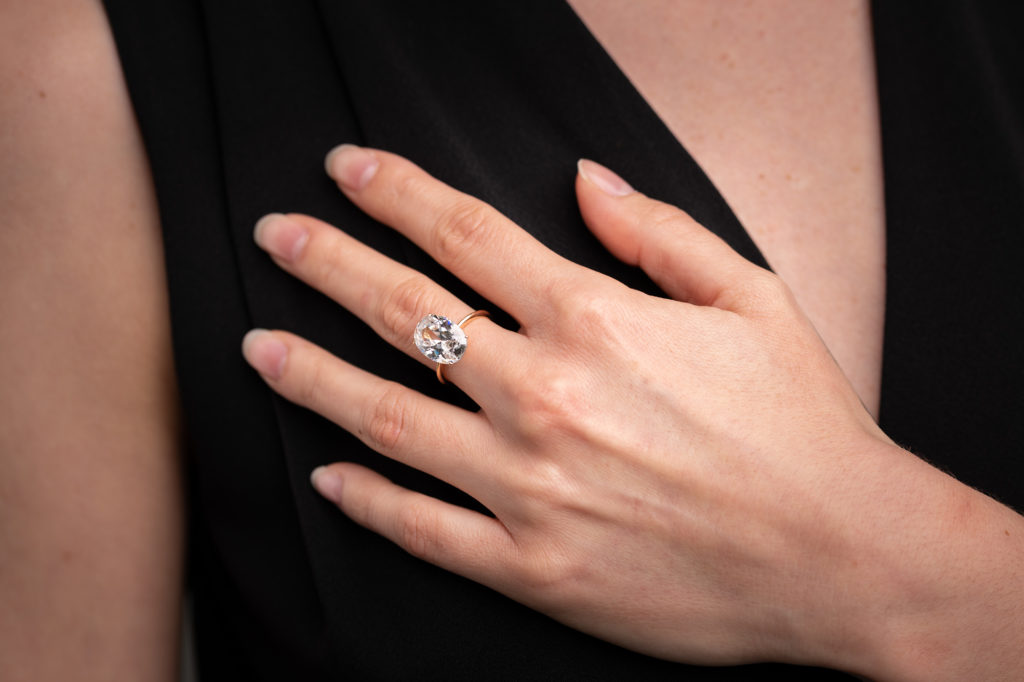
Bezel, closed frame
closed set, fine metal hoop around diamonds
- Modern & slim
- Diamonds looks bigger thanks to bezel
(larger overall picture of the stone due to fine metal ring/rim) - Best protection
- Very suitable for gloves (doctors, nurses, etc.)
- Very suitable for extremely active lifestyle
- Easy care & carefree
- hides part of the diamond, reduces light quantity a little bit
(Sparkle and fire comes from diamond quality and good cut and not from light).
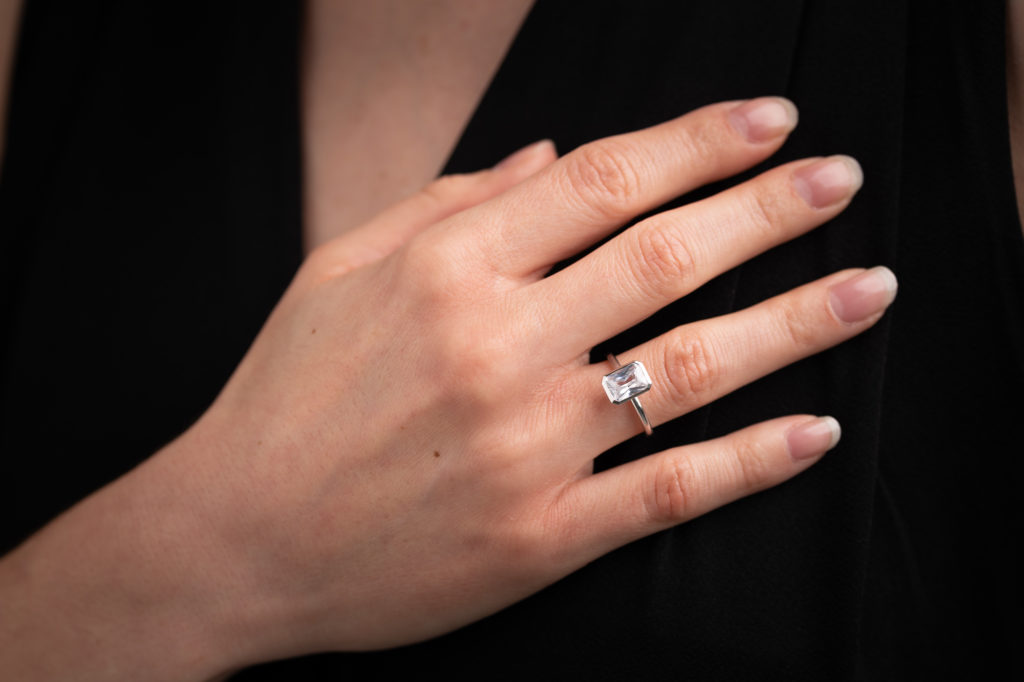
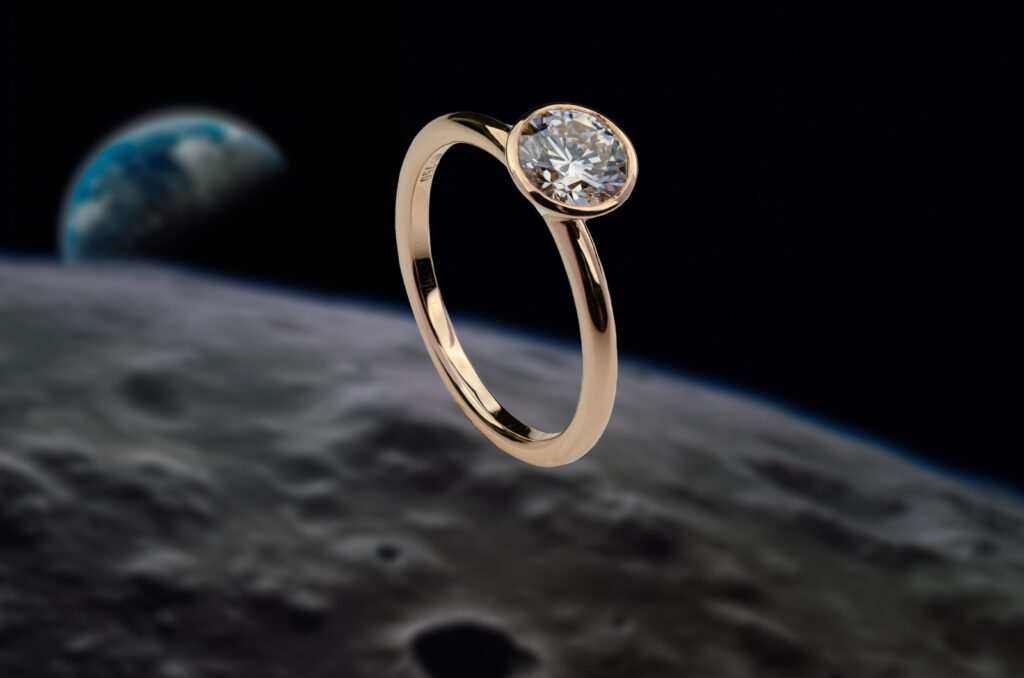
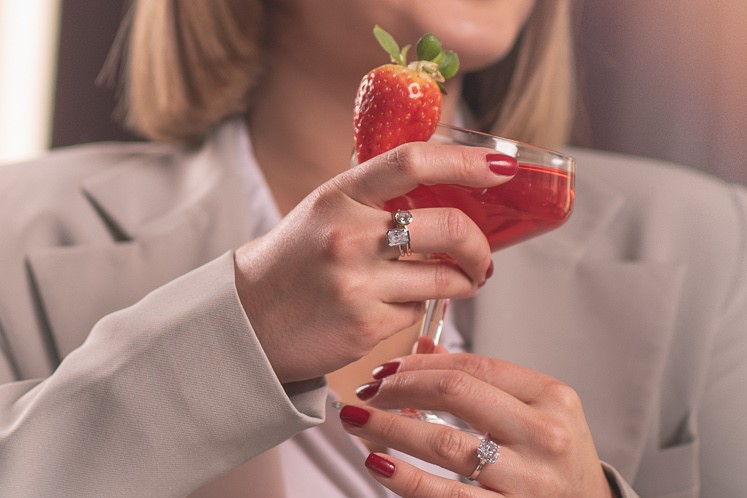
Center-Stone Presentation
CLASSIC –classic solitaire = solitaire diamond, without additional stones
- Classic, timeless, always modern
- Most popular ring version
- Is always a good choice for engagement rings
- Versatile combinable e.g. with Eternity- & Metal-/Wedding-Bands ( Alliance)
Halo (Entourage) = border with small glitter diamonds
- Lots of glitter “bling-bling
- Center stone appears larger
- Very nice for colored diamonds (Fancy Color) because the color of the Fancy Color diamond is ideally accentuated by the contrast of the white glitter stones.
3-Stone Setting = 2 smaller diamonds on both sides (Past – Present – Future)
- Amplifies sparkle
- Center stone appears larger
- Very nice for colored diamonds (Fancy Color) because the color of the Fancy Color
diamonds through the contrast of the white glitter stones ideally comes into its own - 3-stone rings represent the past, present and future
Ring Rail, Ring Shank
Classic = no ornamentation
- Super combinations with Eternity & Metal/Wedding bands ( Alliance)
- Practical & easy to clean
- As a rule ring size easily changeable
Vintage = ring style with intricate metalwork
- Ornaments in metal
- Makes ring look like from another era
→ Art Deco: symmetry and repeating geometric patterns
→ Edwardian jewellery: intricate filigree, often scrolling and floral patterns.
→ Victorian jewelry often includes rows of diamonds
Pavé = small accent stones on the ring hoop (on the side of the ring)
- Effect that the ring is paved with diamonds
- Lots of glitter “bling-bling
- Gives color (idR. White)
- minimally more sensitive than ring without stones
Channel = like pavé (small accent stones on the ring hoop (many small diamonds on the side of the ring))
+ Metal bands on both sides of the diamond row or accent stones
Ring Band Art, Ring Shank Style
Slim, Razor Thin Ring Band
- Narrow ring tapes
→ Centerstone diamond appears visually larger (for this reason, many ring designs are thinned out in the direction of the centerstone diamond or towards the outside (knife edge)). - Stacking Multiple Rings (Eternity & Metal/Wedding Bands)
better with narrow ring bands
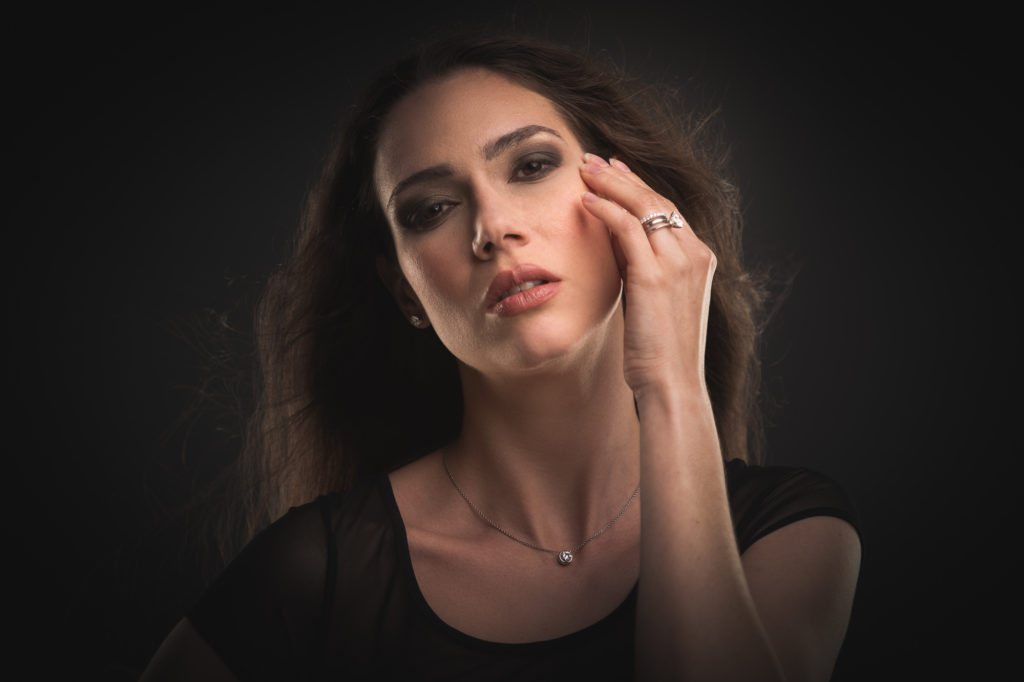
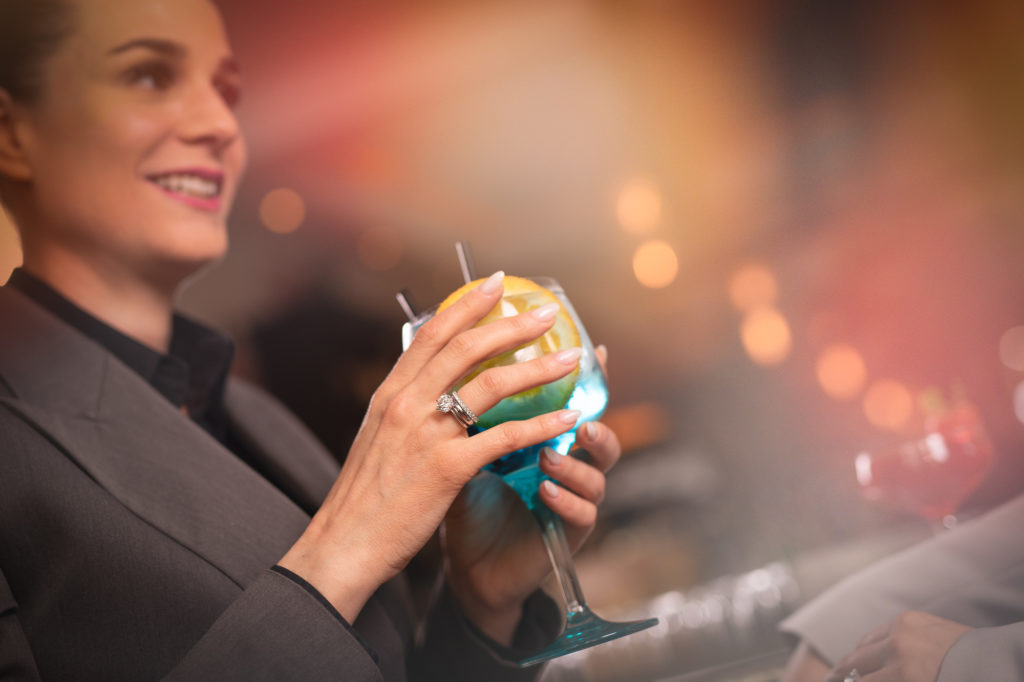
Straight Ring Band
- Straight Band = straight band around finger
Round (tube) or square
Knife Edge Ring Band
- Knife Edge = edge of the shaft of a ring thinned out towards the top → visually narrower
Of course, the “knife edge” is not sharp, but pleasantly fine.
Seems almost invisible -> puts diamonds in the center & diamond seems bigger
Tapered ring band
Cathedral Ring Band
- Cathedral = ring-band continuation direction ½ height center-stone
Ring rail is often set with small diamonds -> raises the stones higher, so that more light falls on them. However, these high set stones are also more susceptible to bumps, scratches and snags.
Split Shank Ring Band
- Split Shank = ring band divided into 2 halves
